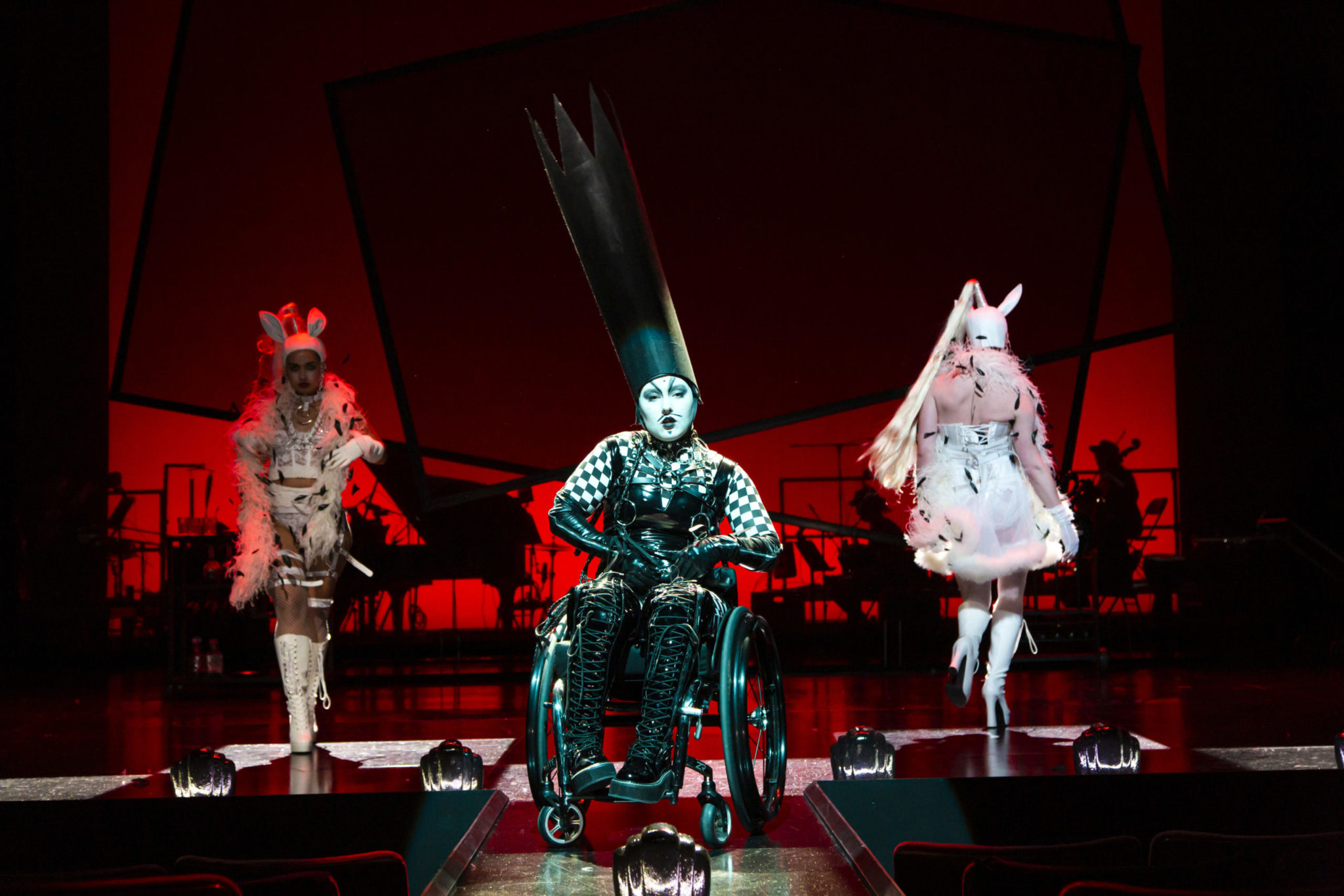
The ticketing site for the Yale School of Drama production of “Alice” provides a particularly cryptic description that leaves almost everything to the imagination. “Charles Dodgson likes to take pictures of young girls. His intended bride, 11-year-old Alice Liddell, is strapped into braces so that she will sit still for her portrait. The child cannot move, but she may yet escape the grip of her suitor — to a place where Hell is above, Heaven below, and the mad ones sing in the language of nonsense” the website reads.
Conceived by Robert Wilson and written into a musical by the collective efforts of Tom Waits, Kathleen Brennan and Paul Schmidt, “Alice” delves into the controversy surrounding “Alice’s Adventures in Wonderland” by Charles Dodgson. Dodgson, also known popularly as Lewis Carroll, was a 19th-century writer and mathematician. Biographers have long debated whether Dodgson was attracted to the young children he wrote about and photographed — particularly Alice Liddell, the 11-year-old girl whom the famous story is based on.
In the program, the setting reads a single word: Dreamland. Upon arriving at the University Theater, I was surprised to find that the stage was entirely black, devoid of color. The band was slightly obscured by a semi-transparent scrim. Extending from the stage was a runway-esque platform that protruded about five feet into the audience.
The cast of “Alice” had no problem utilizing this vast expanse of space. My wonder did not cease once throughout the show — in the opening scene, the scrim rises to reveal the musicians on stage, silhouetted beautifully by a bright white light. Their visible presence was not imposing in the least, emphasizing moments of tension and obscurity with stunning punctuations of sound.
Throughout the musical, we follow Alice through the strange world that is Dreamland, as she encounters peculiar figures who often sing lighthearted tunes with dark undertones. Every member of the cast, with the exception of Alice, plays multiple characters. Supporting the actors’ versatility within the chaos of Dreamland, the costumes are particularly awe-inspiring (designed by Meg Powers). We first encounter the Mad Hatter in a grandiose suit made of pompoms and various fabrics, bursting with color down to his shoes.
Ilia Isorelýs Paulino is spellbinding as the titular character Alice. As she reiterates woefully throughout, she is a “little girl” who has seemingly lost her name. Paulino carefully and thoughtfully navigates the psyche of a child searching for a way out of a devastating situation. As noted by the production dramaturg Evan Hill, “Alice” depicts a Wonderland that “no longer signifies a dreamscape of infinite possibilities but an insidious labyrinth outside of time and society, designed to seal little girls in their infancy.”
Feeling particularly enwrapped in Paulino’s performance, I often felt as though the pervasive nature of Charles Dodgson’s character felt obstructive. His physical presence on the stage, while important, commanded much more attention than I felt was necessary. At times, I was not sure whose subconscious we were observing. I struggled with certain visuals that almost seemed to portray Carroll as conflicted and sympathetic despite the real harm he inflicts on Alice. Nevertheless, I will say that Sola Fadiran has an absolutely enchanting voice and delivers a powerful performance in the role.
For a few moments, Alice appears visibly startled by sudden flashes of light cast across the stage, while fragments of black-and-white photographs appear above her head. Within these glimpses we can clearly recognize little Alice, posing for a portrait — her frightened eyes staring vacantly into the camera until the unsettling gaze of Lewis Carroll takes over. While Paulino handles these moments with heartbreaking confusion, the audience is forced to reckon with the horrific awareness that Dreamland is not reality, but a fleeting escape. While Alice roams free onstage, these scenes remind us that beyond the costumes and music, she remains trapped above ground.
Directed by Logan Ellis, “Alice” is nothing short of haunting. In moments of intense seriousness, Paulino commanded the most attention, her voice unwavering. “He wanted to keep me away from my dreams,” she says at once, but we cannot do anything but stare in awe of her strength.
Alexus Coney | alexus.coney@yale.edu







